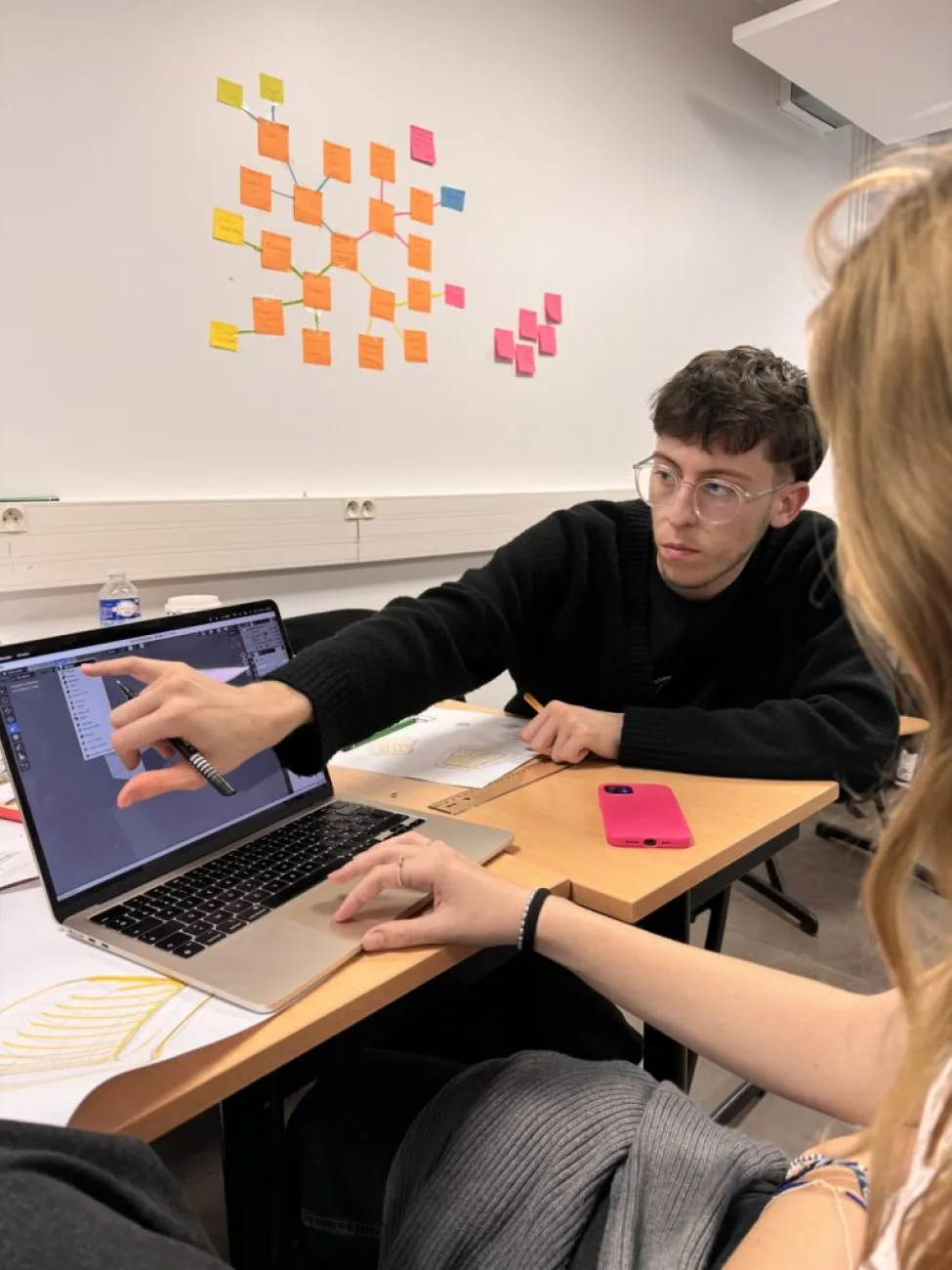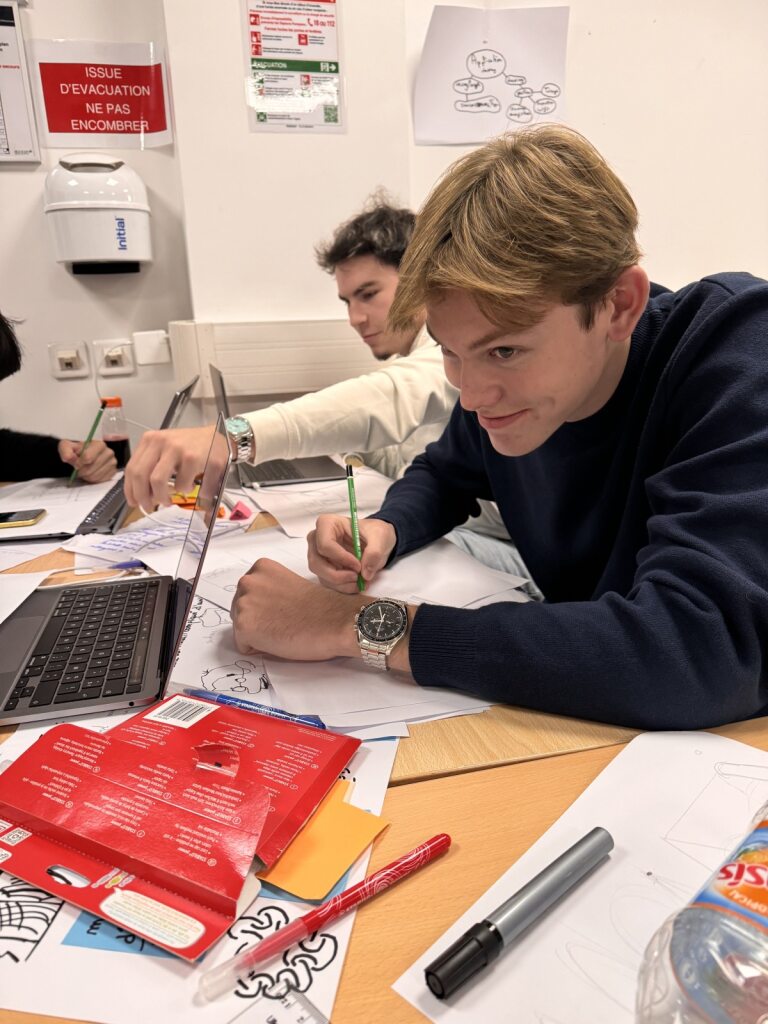Career path and approach to design
Can you introduce yourself and tell us about your background?
I'm Emma Lohner, a product designer. After graduating with a literature-focused baccalauréat, I completed a two-year preparatory course for Art and Design schools before joining Strate School of Design in the second year.
During my studies, I did several internships — at Patrick Jouin ID, Marcel Wanders, Jean Nouvel, and Studio 5.5. Today, I work at the Tristan Lohner agency, where we mostly design furniture, objects, and lighting.
How would you describe your approach to design?
I’m very attached to project methodology. I like to go through drawing, sketching, and finding visual and artistic references in a wide variety of fields. I try to design generous, functional, and simple forms, using materials I enjoy working with. Above all, I want to work on projects that have meaning — a reason to exist — and that can be useful to society, even on a small scale.
Introducing design thinking to Paris School of Business students
Why is it important to introduce design to business school students?
It’s important to understand that design is not just about making things “pretty.” It’s a rigorous, structured methodology aimed at finding concrete solutions to problems. This approach is just as relevant in the field of business and can be applied effectively.
Design is everywhere — in public spaces, transportation, healthcare services, and ecological transition. Showing this to students who haven’t had artistic training helps break certain stereotypes.
More importantly, it gives them a method they can adapt for future professional projects.


An active and immersive learning experience during the Creative Tracks
Can you tell us more about the Creative Track module you led at Paris School of Business?
I always start by saying that design doesn’t necessarily require inspiration, unlike art. It’s above all a method. We work with constraints. It’s a long, iterative process that involves trial and error, and research.
The theme of this edition was “Crisis Management.” Each group selected a specific crisis (migration, environmental, social…) and had to come up with a response using the design thinking approach.
I guided them through all the steps: framing, research, problem definition, ideation, prototyping, and presentation. At the end of the week, students pitched their projects to a diverse jury — including experts, users, investors, and more.
It’s also a race against the clock. They have to be efficient, concise, and precise.
The benefits for students and their professional future
In your opinion, what does this module bring to students?
I think the main skill they acquire is learning how to commit to a project they care about and figure out how to bring it to life — even if it means learning new tools or techniques.
They also discover the importance of teamwork, structuring ideas, defending a project, and speaking confidently in front of others.
By the end of the week, there’s a real transformation. They gain confidence, take more risks, and learn how to express coherent, well-structured proposals.
A perspective on creativity and advice for future professionals
What advice would you give to a student looking to boost their creativity or explore new fields?
Never be “cannibalistic” — meaning, don’t only draw inspiration from others in your own industry. You’ll end up going in circles and losing your innovative edge.
You need to look elsewhere — in nature, history, literature, music, science. That’s what allows you to create something truly unique.



